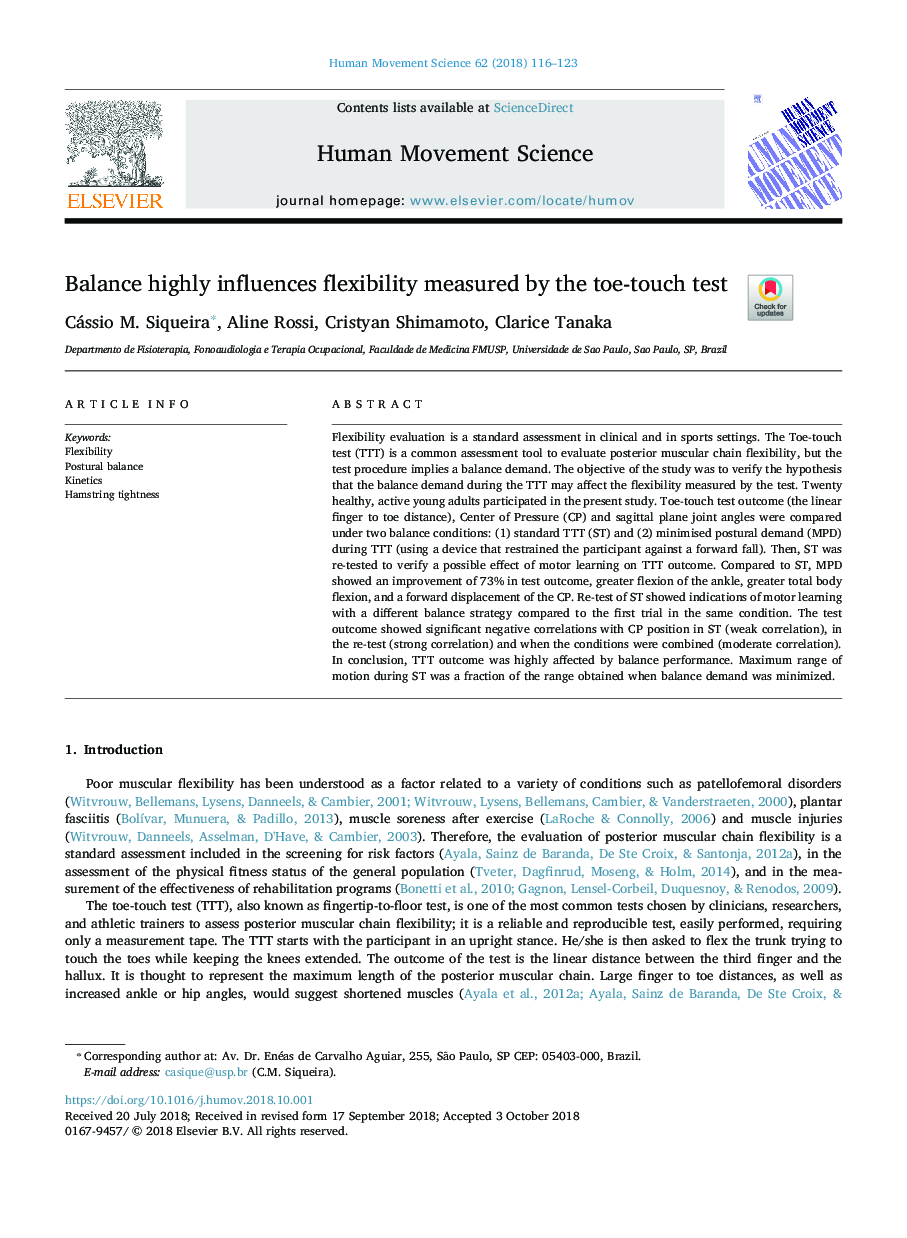| Article ID | Journal | Published Year | Pages | File Type |
|---|---|---|---|---|
| 11031374 | Human Movement Science | 2018 | 8 Pages |
Abstract
Flexibility evaluation is a standard assessment in clinical and in sports settings. The Toe-touch test (TTT) is a common assessment tool to evaluate posterior muscular chain flexibility, but the test procedure implies a balance demand. The objective of the study was to verify the hypothesis that the balance demand during the TTT may affect the flexibility measured by the test. Twenty healthy, active young adults participated in the present study. Toe-touch test outcome (the linear finger to toe distance), Center of Pressure (CP) and sagittal plane joint angles were compared under two balance conditions: (1) standard TTT (ST) and (2) minimised postural demand (MPD) during TTT (using a device that restrained the participant against a forward fall). Then, ST was re-tested to verify a possible effect of motor learning on TTT outcome. Compared to ST, MPD showed an improvement of 73% in test outcome, greater flexion of the ankle, greater total body flexion, and a forward displacement of the CP. Re-test of ST showed indications of motor learning with a different balance strategy compared to the first trial in the same condition. The test outcome showed significant negative correlations with CP position in ST (weak correlation), in the re-test (strong correlation) and when the conditions were combined (moderate correlation). In conclusion, TTT outcome was highly affected by balance performance. Maximum range of motion during ST was a fraction of the range obtained when balance demand was minimized.
Related Topics
Life Sciences
Neuroscience
Cognitive Neuroscience
Authors
Cássio M. Siqueira, Aline Rossi, Cristyan Shimamoto, Clarice Tanaka,
